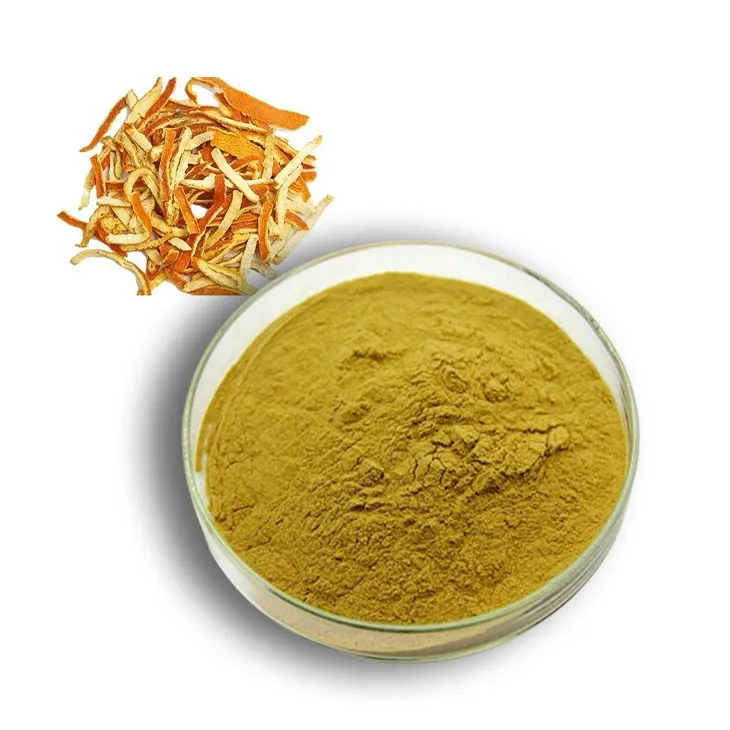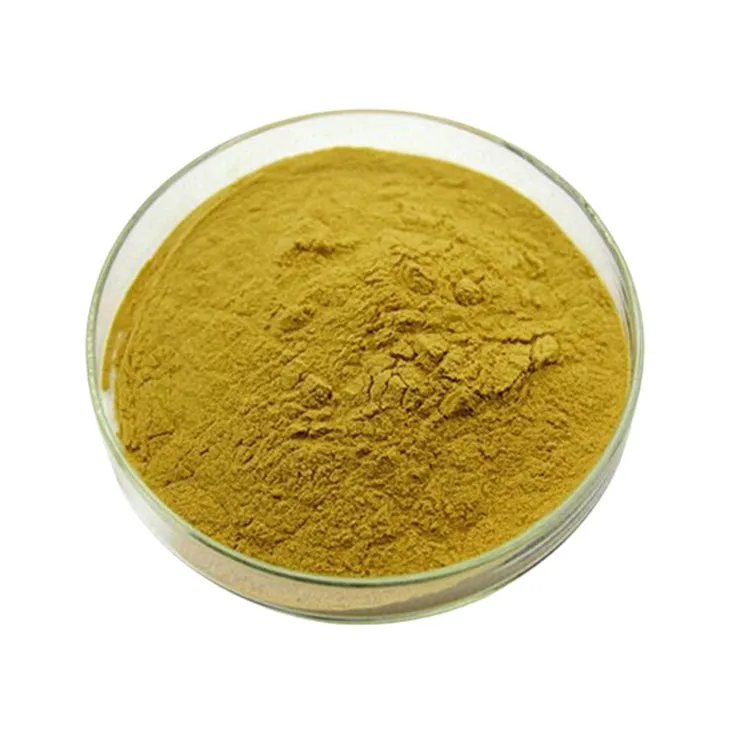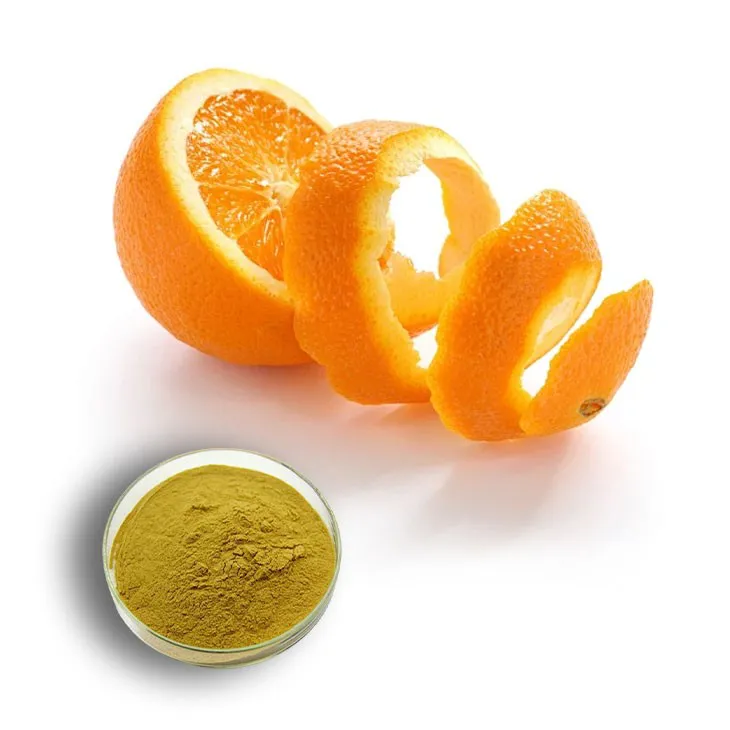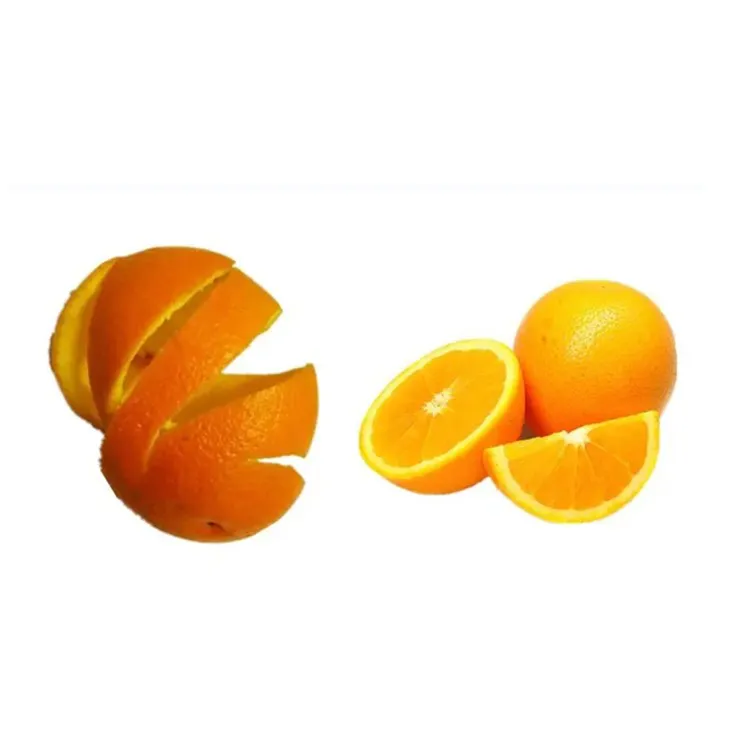- 0086-571-85302990
- sales@greenskybio.com
Nature's Gift: Exploring the Rich Sources of Hesperidin in the Plant Kingdom
2024-07-04

1. Introduction
Hesperidin is a remarkable flavonoid that nature has provided us. It has drawn significant attention in recent years due to its various potential health benefits and interesting chemical properties. Flavonoids in general are known for their antioxidant, anti - inflammatory, and other physiological effects. Hesperidin, in particular, has been studied for its role in cardiovascular health, immune system modulation, and more. However, to fully understand and utilize Hesperidin, it is crucial to explore its sources within the plant kingdom. This exploration not only includes the well - known citrus sources but also the less - explored non - citrus plants.

2. Citrus Sources of Hesperidin
2.1 Orange
Oranges are perhaps the most common and well - known source of hesperidin. The peel of the orange contains a relatively high concentration of this flavonoid. Hesperidin in oranges is part of the plant's defense mechanism against environmental stressors. It helps protect the orange tree from pathogens and oxidative damage. The peel, which is often discarded in many food processing operations, could be a valuable source for extracting hesperidin. Orange juice also contains some amount of hesperidin, although in a lower concentration compared to the peel.
2.2 Lemon
Lemons, another popular citrus fruit, are also rich in hesperidin. Similar to oranges, the lemon peel is a significant source. The flavonoid in lemons contributes to the overall antioxidant capacity of the fruit. It also plays a role in the characteristic flavor and aroma of lemons. The presence of hesperidin in lemons may be related to the plant's adaptation to its environment, helping it to survive in relatively harsh conditions. Lemon - based products, such as lemonade and lemon - flavored foods, may contain some hesperidin, depending on the extraction and processing methods.
2.3 Grapefruit
Grapefruits are known for their unique taste and health - promoting properties, and hesperidin is one of the key components contributing to these benefits. The white part of the grapefruit peel, known as the albedo, is rich in hesperidin. This flavonoid in grapefruits may interact with other compounds in the fruit, such as naringin, to enhance its antioxidant and anti - inflammatory effects. Grapefruit juice, which is consumed widely, contains hesperidin, although the amount can vary depending on the variety of grapefruit and the processing techniques used.

3. Non - citrus Sources of Hesperidin
3.1 Buckwheat
Buckwheat is a non - citrus plant that has been found to contain hesperidin. This plant is widely cultivated in many parts of the world for its nutritious seeds. The presence of hesperidin in buckwheat may be related to its own defense mechanisms against pests and diseases. Buckwheat is also known for its high content of other beneficial compounds, such as rutin, and the combination of these flavonoids may contribute to the overall health - promoting properties of buckwheat - based products. Buckwheat flour, for example, which is used in various food products like pancakes and noodles, may contain hesperidin, although further research is needed to determine the exact amounts and bioavailability.
3.2 Holy Basil
Holy Basil, also known as Ocimum sanctum, is a medicinal plant in many traditional medicine systems. It has been found to contain hesperidin among other bioactive compounds. The presence of hesperidin in Holy Basil may play a role in its anti - stress, anti - microbial, and anti - inflammatory properties. This plant is often used in herbal teas and supplements, and the hesperidin content could potentially contribute to its health - enhancing effects. However, more research is required to fully understand the role of hesperidin in Holy Basil and how it interacts with other components of the plant.
3.3 Cape Gooseberry
Cape Gooseberry, also called Physalis peruviana, is a non - citrus fruit that has been shown to have hesperidin in its composition. This fruit is native to South America but is now cultivated in many other parts of the world. The hesperidin in Cape Gooseberry may contribute to its antioxidant and potential health - promoting activities. The fruit is rich in vitamins and other nutrients, and the presence of hesperidin adds to its overall value. It can be consumed fresh, made into jams or jellies, or used in various culinary preparations, and in all these forms, it may provide some amount of hesperidin.

4. Role of Hesperidin in Plant Physiology
Hesperidin plays several important roles in plant physiology. One of the main functions is as an antioxidant. In plants, just like in animals, oxidative stress can occur due to various factors such as exposure to UV radiation, pollutants, and pathogens. Hesperidin helps to neutralize free radicals in plants, protecting the cells from damage. It also acts as a signaling molecule in plant - pathogen interactions. When a plant is attacked by a pathogen, hesperidin may be involved in triggering the plant's defense responses, such as the production of phytoalexins and activation of defense - related genes.
Furthermore, hesperidin may play a role in plant growth and development. It has been suggested that it could be involved in regulating processes such as cell division and elongation. For example, in some plants, the presence of hesperidin in certain tissues may be related to the proper development of the vascular system. This understanding of the role of hesperidin in plant physiology can provide insights into why some plants are rich in this compound. Plants that are exposed to more environmental stressors or have a more complex defense system may produce more hesperidin as part of their survival strategy.

5. Global Distribution of Hesperidin - rich Plants
5.1 Citrus Plants
Citrus plants are widely distributed around the world, with major production areas in tropical and subtropical regions. For example, oranges are produced in large quantities in countries such as Brazil, the United States (Florida and California), and Spain. Lemons are also grown in many Mediterranean countries, as well as in California. Grapefruits are mainly produced in the United States, Israel, and South Africa. The wide distribution of citrus plants means that hesperidin from these sources is relatively accessible for research and commercial use. However, factors such as transportation, storage, and processing costs can still affect the availability and cost - effectiveness of hesperidin extraction from citrus sources.
5.2 Non - citrus Plants
Buckwheat is grown in many temperate regions, including parts of Europe, Asia, and North America. Holy Basil is native to India but is now cultivated in many tropical and subtropical regions around the world. Cape Gooseberry is mainly grown in South America, but its cultivation is expanding to other parts of the world. The global distribution of these non - citrus hesperidin - rich plants is more fragmented compared to citrus plants. This can pose challenges for large - scale extraction and commercial use of hesperidin from these sources. For example, the limited cultivation area of some non - citrus plants may lead to higher costs of raw materials, and the lack of standardized cultivation and extraction methods can also affect the quality and quantity of hesperidin obtained.
6. Conclusion
In conclusion, hesperidin is a valuable flavonoid with diverse sources in the plant kingdom. While citrus plants are the most well - known sources, non - citrus plants also contribute significantly to the overall availability of this compound. Understanding the role of hesperidin in plant physiology can help us better understand why certain plants are rich in it. The global distribution of hesperidin - rich plants affects their availability for research and commercial use. Future research should focus on further exploring the non - citrus sources of hesperidin, improving extraction methods, and studying the potential health benefits of hesperidin from different plant sources. This will not only enhance our knowledge of this important flavonoid but also open up new opportunities for its application in the fields of medicine, nutrition, and cosmetics.
FAQ:
What are the major citrus sources of hesperidin?
Citrus fruits such as oranges, lemons, and grapefruits are major sources of hesperidin. In oranges, for example, the peel contains a relatively high amount of hesperidin. The compound is also present in the pulp, although in smaller quantities compared to the peel.
Can you name some non - citrus plants that are rich in hesperidin?
Some non - citrus plants that are known to contain hesperidin include certain species of buckwheat. These plants, while not as well - known as citrus for hesperidin content, still contribute to the overall availability of this flavonoid in nature.
What role does hesperidin play in plant physiology?
Hesperidin may play several roles in plant physiology. It can act as an antioxidant, protecting plant cells from oxidative damage. It may also be involved in plant - pathogen interactions, helping the plant defend against diseases. Additionally, hesperidin could potentially play a role in regulating plant growth and development, although more research is needed to fully understand these mechanisms.
How does the global distribution of hesperidin - rich plants affect their availability for research?
The global distribution of hesperidin - rich plants can have a significant impact on their availability for research. If a plant that is rich in hesperidin is native to a remote or difficult - to - access area, it can be challenging for researchers to obtain samples. This may limit the amount of research that can be done on that particular plant's hesperidin content. On the other hand, plants that are widely distributed may be more easily accessible for research purposes.
How does the global distribution of hesperidin - rich plants affect their commercial use?
The global distribution of hesperidin - rich plants affects their commercial use in various ways. For plants that are only found in specific regions, the cost of sourcing and transporting the plants or their extracts for commercial production can be high. Additionally, differences in regulations regarding the harvesting and use of plants in different countries can also impact their commercial availability. Widespread distribution may lead to more stable and cost - effective commercial supply.
Related literature
- Hesperidin: A Review on Its Pharmacological and Nutritional Importance"
- "Sources and Bioavailability of Hesperidin in the Plant Kingdom"
- "The Role of Hesperidin in Plant Defense Mechanisms"
- ▶ Hesperidin
- ▶ Citrus Bioflavonoids
- ▶ Plant Extract
- ▶ lycopene
- ▶ Diosmin
- ▶ Grape seed extract
- ▶ Sea buckthorn Juice Powder
- ▶ Fruit Juice Powder
- ▶ Hops Extract
- ▶ Artichoke Extract
- ▶ Mushroom extract
- ▶ Astaxanthin
- ▶ Green Tea Extract
- ▶ Curcumin
- ▶ Horse Chestnut Extract
- ▶ Other Product
- ▶ Boswellia Serrata Extract
- ▶ Resveratrol
- ▶ Marigold Extract
- ▶ Grape Leaf Extract
- ▶ New Product
- ▶ Aminolevulinic acid
- ▶ Cranberry Extract
- ▶ Red Yeast Rice
- ▶ Red Wine Extract
-
Purple Sweet Potato Extract
2024-07-04
-
Polygonum Cuspidatum Extract
2024-07-04
-
Lycopene
2024-07-04
-
Echinacea Extract
2024-07-04
-
Chia Seed Powder
2024-07-04
-
Saponin Extract
2024-07-04
-
Yellow Pine Extract
2024-07-04
-
Aminolevulinic acid
2024-07-04
-
Camu Camu Extract
2024-07-04
-
Honeysuckle Pollen
2024-07-04





















